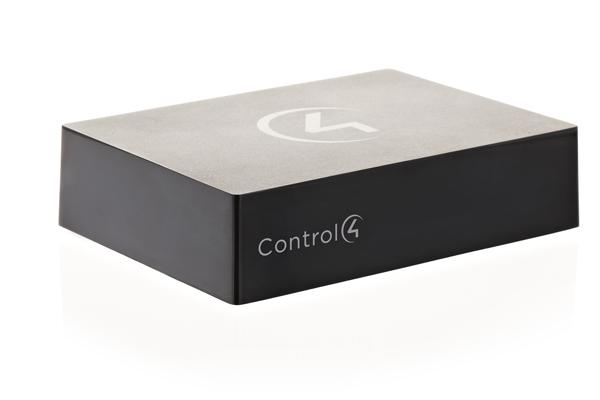Control4’s Music Bridge Over the River Wi-Fi

A couple of weeks ago, however, Control4 did succeed in piquing my interest when a new Wireless Music Bridge arrived at my door. Since I thought it would be rude not to hook it up and try it out—well, actually, I can’t stand the thought of a poor, lonely gadget sitting in a dark box, totally afraid its going to be overlooked and end up on the “Island of Misfit Electronics”—I released it from plastic-wrapped captivity and handed it over to the loving care of the Control4 home automation review system in my house.
Control4’s Wireless Music Bridge (“the bridge” as Control4 refers to it) is a small—6.3” x 4.7” x 1.6”—nondescript component that integrates AirPlay, Bluetooth, and DLNA connectivity into a Control4 system. The reason why I didn’t find this to be a big deal at the introduction was because I already had iPod Docks from Control4 and iPort in the Control4 system I use. Since my daughter and I both have iPhone 4Ss and we’re the ones who primarily use the system to listen to music in my house, having another box that gave us extra connectivity seemed frivolous.
And then it happened.
Amidst floods, tornadoes, and severe lightning strikes, one of my sons got married a shortly before the bridge arrived. Several friends and relatives from out of state stayed with us; and they, of course, brought with them various smart devices and laptops. One of our visitors had an iPhone. The rest, to much dismay, carried Android OS devices and/or Windows laptops with them. Although the groom had recently upgraded to an iPhone, it was an iPhone 5 with the Lightning connector (and no Lightning to 30-pin adapter cable). Despite the fact that all of these devices held gigabytes of music, none of them could use the iPod docks as a gateway to get music to play on the speakers installed in various rooms. What we had instead was a collection of inhabitants of the “Island of Lost Playlists”. (Yes, there were other workarounds I could have used, but they were all pretty kludgy.)
Had Control4’s Wireless Music Bridge been here during that time, any one of our five guests could have streamed music from a phone or laptop directly to the speakers in the kitchen, the bathroom, or the cramped room where the pool table lives. My son’s iPhone 5 could have used the bridge’s AirPlay connectivity. The heretical Android users (of whom my other son is one) along with the Windows laptop owners could have streamed their music to the bridge using DLNA. Both AirPlay and DLNA require a connection to my home’s network; but if I didn’t trust my guests with the password to my Wi-Fi network, those freeloaders who had smartphones or laptops with Bluetooth could have used that technology to foist their eclectic musical choices upon us. Instead, I made them listen to the PSY “Gangnam Style” channel on Pandora the entirety of the time they were here.
So far, I’ve found the Wireless Music Bridge to be unbelievably easy to use. As far as the Control4 system is concerned, the bridge simply shows up as another available source of music. With my iPhone and iPad, as well as my MacBook Air, it’s a simple matter of selecting the bridge as the AirPlay playback device. Streaming from an Android or Windows DLNA-compatible device is a bit trickier, but only because there are multiple ways to configure apps and programs that utilize DLNA. And using Bluetooth is no more cumbersome than connecting any other Bluetooth device. Of course, Bluetooth’s main disadvantage is range. Whereas AirPlay and DLNA-compatible devices can communicate with the bridge via your home network as long as there’s a Wi-Fi signal, the Class 2 Bluetooth transceiver in the Wireless Music Bridge has a best-case range of about 10 meters (33 feet). So, if the bridge is stacked in your main equipment rack with the rest of your gear, and you want to play music from a smartphone that’s two rooms away using Bluetooth, the chances are slim that you’ll get a reliable connection that far away—especially if there are several intervening walls for the signal to get through.
iPod docks in a Control4 system are limited to only streaming music from iTunes on your iOS device. The bridge allows you stream any audio from many lots of other apps, such as Pandora, Spotify, or tunein—and, in most cases, the metadata is passed on to the other touchscreens in the system.
Obviously, Control4’s Wireless Music Bridge is of absolutely no value if you don’t have a Control4 automation system. On the other hand, unless you use the Control4 system in your home strictly for automation of lights, locks, and thermostats, then the bridge is an absolute must-have.
- Log in or register to post comments














































